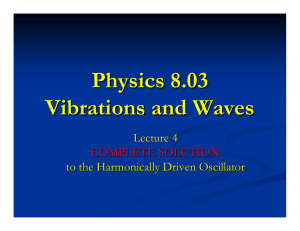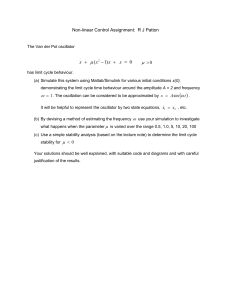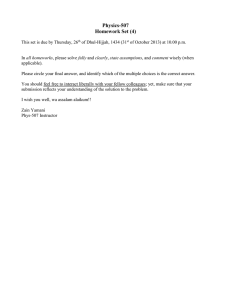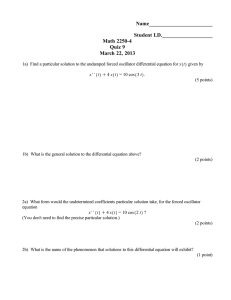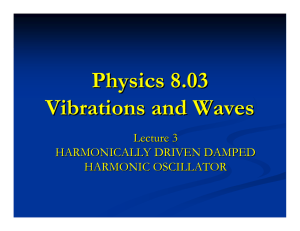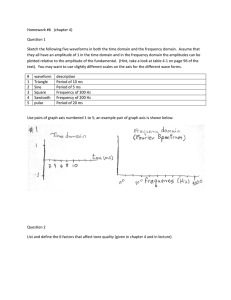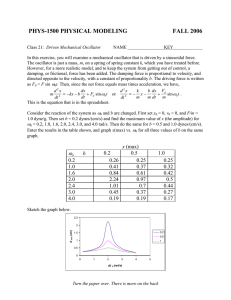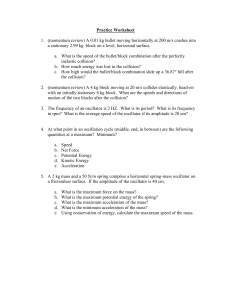Complex Problem 1
advertisement
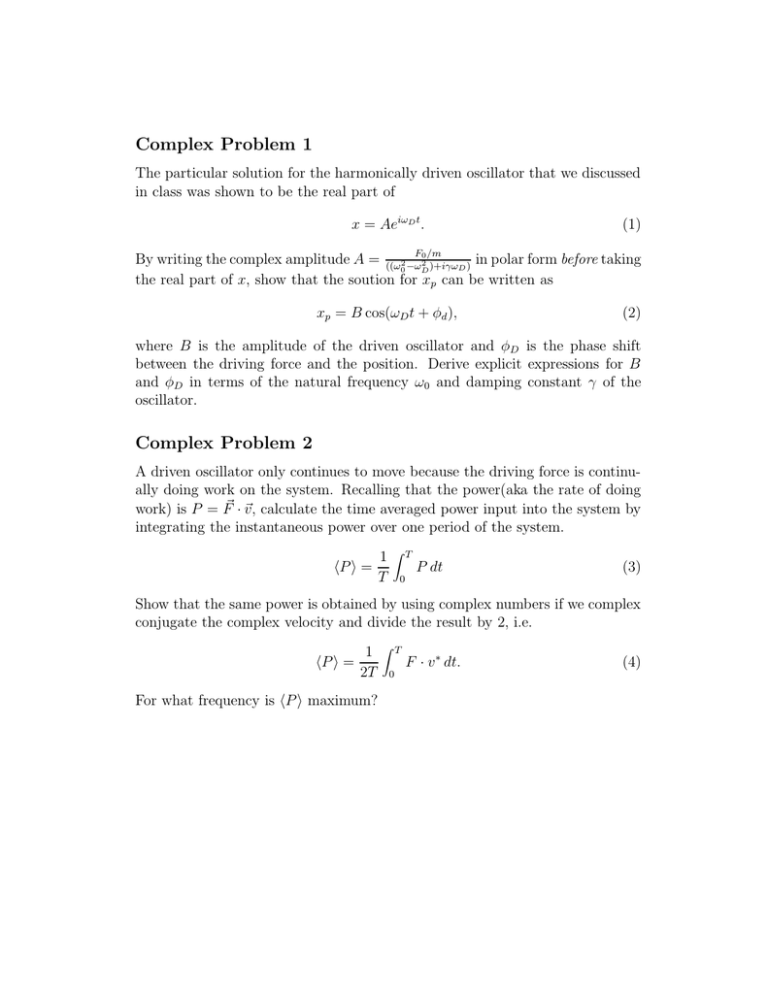
Complex Problem 1 The particular solution for the harmonically driven oscillator that we discussed in class was shown to be the real part of x = AeiωD t . (1) By writing the complex amplitude A = ((ω2 −ωF20 /m in polar form before taking 0 D )+iγωD ) the real part of x, show that the soution for xp can be written as xp = B cos(ωD t + φd ), (2) where B is the amplitude of the driven oscillator and φD is the phase shift between the driving force and the position. Derive explicit expressions for B and φD in terms of the natural frequency ω0 and damping constant γ of the oscillator. Complex Problem 2 A driven oscillator only continues to move because the driving force is continually doing work on the system. Recalling that the power(aka the rate of doing work) is P = F~ · ~v , calculate the time averaged power input into the system by integrating the instantaneous power over one period of the system. hP i = 1 T Z T P dt 0 (3) Show that the same power is obtained by using complex numbers if we complex conjugate the complex velocity and divide the result by 2, i.e. hP i = 1 ZT F · v ∗ dt. 2T 0 For what frequency is hP i maximum? (4)
